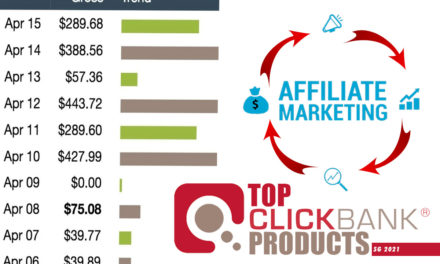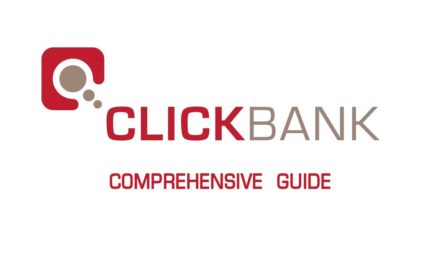
Shopify and Clickbank Integration

Shopify is a popular e-commerce platform that offers online retailers a suite of services including payments, marketing, shipping, and customer engagement tools.
ClickBank is a global digital retailer and leading affiliate marketplace. It connects vendors with affiliate marketers selling their digital information, such as ebooks and courses.
Integrating with ClickBank allows e-commerce brands to increase their reach across multiple niches, websites, and social media platforms. It also helps establish credibility and trust among consumers, which contributes to better brand recognition.
How to Set Up
Shopify is an e-commerce software that allows anyone to create an online store, list products, sell them and collect payments through cards. It is one of the most popular software-as-a-service (SaaS) e-commerce platforms and is used by more than 1.75 million merchants worldwide. It is an all-in-one e-commerce solution with a robust suite of services and unrivaled customer support.
ClickBank is a global digital retailer and leading affiliate marketplace that connects vendors who offer digital products to affiliate marketers who promote these products. This allows both parties to reach more consumers and earn commissions from their sales.
When a customer purchases a product through ClickBank, the order data is automatically sent to her Shopify account. This can make delivering the product to your customers faster and more reliable.
This integration is free, easy to set up, and simple to manage. It is recommended for sellers who are using Shopify as their primary e-commerce platform.
The integration can be configured to send orders, refunds, and inventory data from ClickBank to your Shopify store. You can also configure it to notify ClickBank when orders have shipped.
To set up this integration, you will need to create a custom app in Shopify that syncs ClickBank data with your store. If you haven’t done so already, you will need to follow the instructions in this guide: How to Create a ClickBank App in Shopify
Once you have completed this step, you can go to your ClickBank account to integrate the app. Once the integration is complete, you will receive an email from ClickBank containing the Access Token that you need to enable in your Shopify store.
If you are new to ClickBank, you will need to sign up for an account and create a new account nickname. Once your account is created, you can select the clickbank-shopify integration in your Accounts tab.
You will then be able to add your Shopify account nickname and the account name of the products you wish to sync with ClickBank. You can also choose whether you want to decrement your inventory on ClickBank or not, and choose which orders you want to sync from Shopify to your ClickBank account.
Getting Started
Using Shopify is one of the most popular ways for small businesses to sell products online. It offers a suite of services including payments, marketing, shipping, and customer engagement tools to simplify the process of running an online store. It is used by over 1.75 million merchants worldwide and 20 percent of all e-commerce websites.
If you’re using affiliate marketing to boost sales in your Shopify store, the ClickBank integration will help you easily manage and track the results of your campaigns. This allows you to improve your campaign performances and get clear insights into how you’re doing.
To set up the ClickBank integration, you’ll need to pull the Clerk API Key and Developer API Key from your ClickBank account and paste them into Sendlane’sClickBank integration. To make sure the integration is successful, you’ll also need to copy your Secret Key from Sendlane.
Once you have those keys in hand, you can proceed to the next step of integrating your ClickBank and Shopify accounts. Once you’ve selected the application you want to integrate, a window will pop up asking you to provide a name for your integration. Plug in your ClickBank Clerk API Key and ClickBank Developer API Key into the corresponding fields, and then click Save to complete the integration.
After the integration is completed, you can start sending personalized emails to customers. For example, if a customer has abandoned their cart and left their payment information behind, you can send them an automated email to win back their business. You can even add dynamic ClickBank content blocks to your automated email templates to ensure each customer receives a unique and personalized experience!
The Shopify and ClickBank integration is a great way to build a long-term affiliate marketing strategy that helps you grow your business. It’s simple to set up and allows you to find, manage and pay affiliates across the globe.
Choosing the right affiliates for your brand can make or break your e-commerce success. You should choose only the best affiliates that can bring in the most sales and help you create a positive brand reputation.
Syncing Orders
Shopify is an e-commerce software that allows you to list products, collect payments through cards, and ship your goods to your clients. Using this software can help you increase your sales and make your business grow.
ClickBank is a global digital retailer and leading affiliate marketplace that connects digital content creators with affiliate marketers offering digital information. It’s one of the most well-known platforms in the world and has been around for over 17 years!
If you’re a ClickBank seller, you can integrate your Shopify store with ClickBank to automatically send orders and customer data between the two systems. It’s free, and it’s fast and easy to set up!
To connect Shopify and ClickBank, you’ll need to create a custom app in Shopify. To learn how to do this, visit our How to Create a Shopify App page.
Syncing your inventory between ClickBank and Shopify is important to keep your products available for purchase. It also helps to avoid restocking fees that can be incurred when customers return items.
In the Orders settings page, check the Sync “Buy in-store, ship to a customer” orders as sales orders checkbox. When this setting is checked, the warehouse team can process fulfillment in NetSuite and sync back the fulfillment information to Shopify.
The Multiorders module will automatically merge products and variants across multiple Shopify stores if they all have the same SKU. This is a great feature for large retailers or businesses that sell a lot of identical products, such as clothes, shoes, or jewelry.
It’s possible to sync inventory between Shopify and ClickBank, as long as the SKU for each product or variant is unique. In case the SKU of a product is the same, but you don’t have the same quantity in stock for all of the variants, you can update the inventory for each of these products and variants manually after completing the integration.
Besides syncing inventory between Shopify and ClickBank, you can also use the Multiorders plugin to automatically update your inventory numbers on multiple Shopify stores. The plugin will sync the SKU for each item in the order and will update the inventory in each of your stores based on this data.
Syncing Inventory
Syncing inventory is important for e-retailers who want to keep track of their products across multiple sales channels. To make sure e-retailers keep their inventory accurate, they need software such as multi-channel systems and ERP systems that have stock synchronization capabilities.
Most eCommerce platforms, online stores, and ERP systems provide stock synchronization capabilities that help businesses to manage their stock in a hassle-free manner. In addition to synchronizing product inventory, the systems also allow store owners to monitor their stocks and prevent overselling or underselling products.
Shopify and ClickBank integration – This is a free and easy-to-set-up solution that allows ClickBank sellers to sync all orders and customer data from ClickBank with their Shopify store. It’s a great option for ClickBank sellers who are already using Shopify as their primary e-commerce platform.
When the integration is activated, Integration Manager will automatically pick up all orders with open “Paid” or “Authorized” statuses. If you do not want to pick up Archived orders, change the Order Status to Closed or Any in the Integration Manager settings.
Once the inventory is synced, you can review the status of all items in your Shopify stores and export their tags if you want. This can be done by clicking on the action for Imported tags on the Tags FactBox on the Shopify Products page.
If the To Shopify option is selected, assigned tags are exported to Shopify at the next sync. This is an ideal solution for customers who don’t want to manually update their tags on their Shopify store and who prefer to let Shopify do the work.
Alternatively, you can synchronize products one by one or schedule the task to run automatically. If you’re not interested in managing your inventory manually, you can create a batch job that will synchronize the products every day or every week.
The standard inventory calculation method is the Projected Available Balance at the date. However, if you have extensibility enabled in Business Central, you can enable other calculations like Lot/Batch, weighted average, and count-on-hand.
Once the inventory is synchronized, you can review the status of all items on your Shopify stores and export their tags – these are assigned in Business Central. This can be done by clicking on the Sync Item Action in the Sync Product Table or a scheduled recurring task.


























